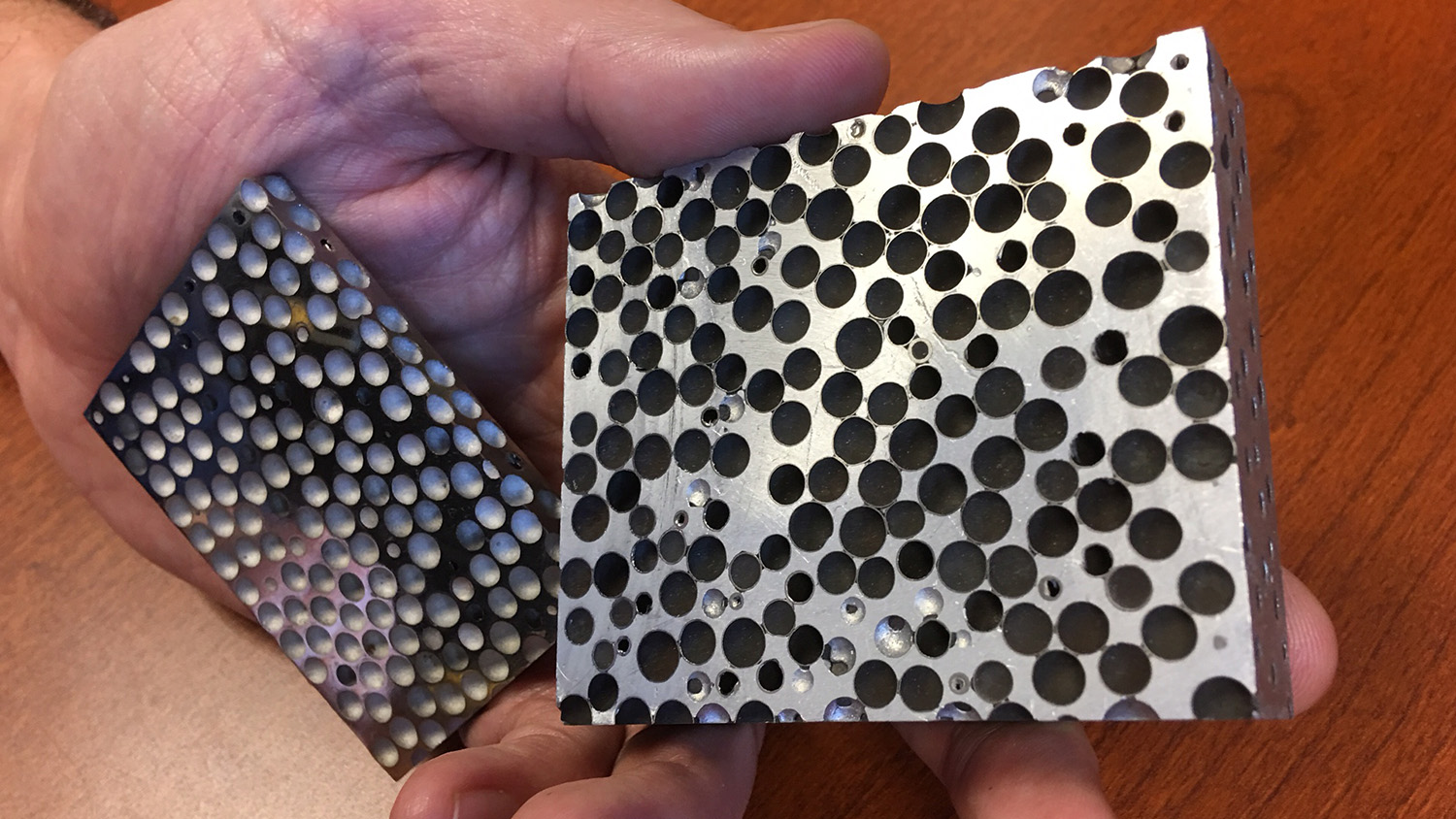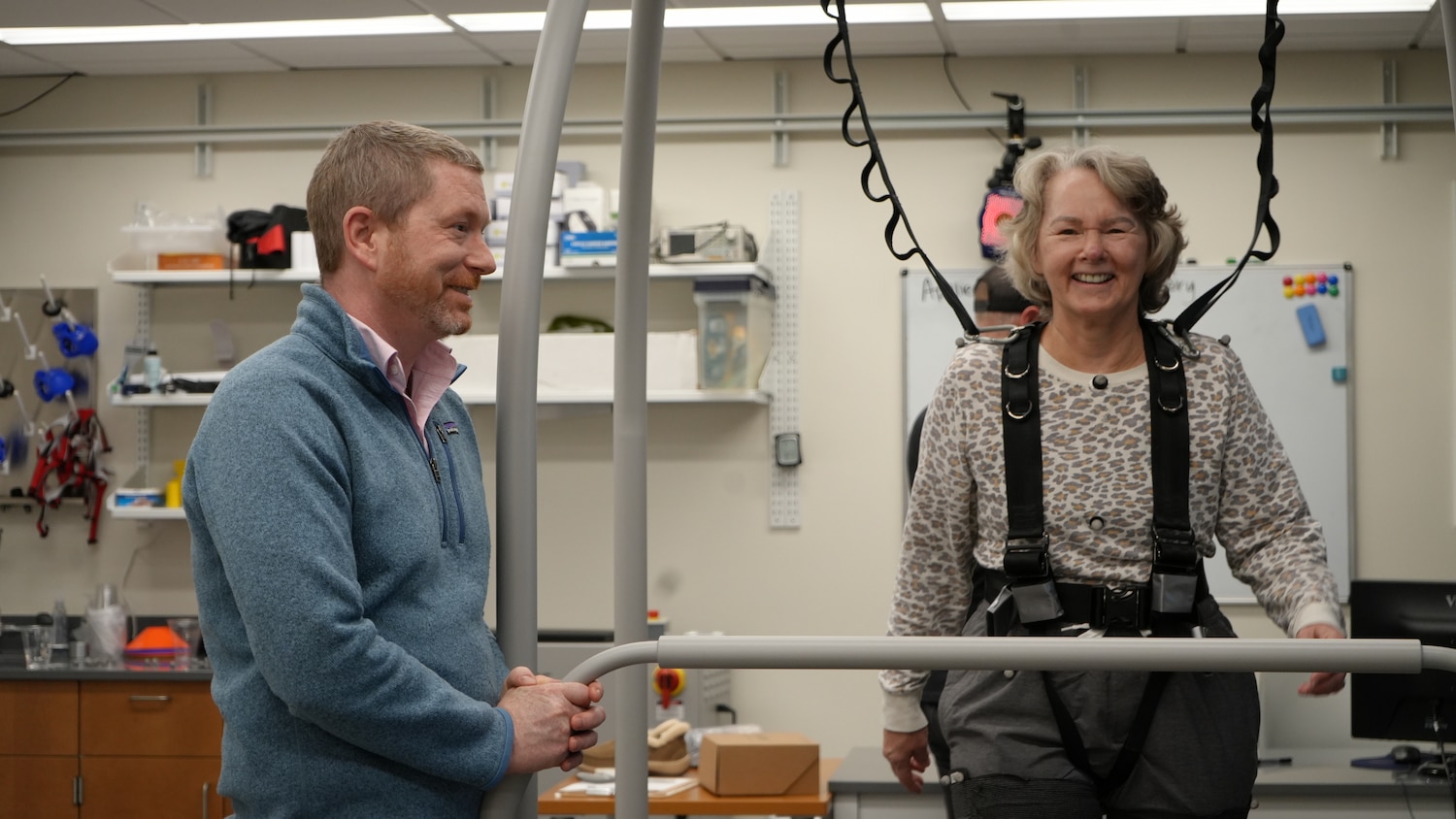For Immediate Release
Researchers at North Carolina State University have developed a range of composite metal foams (CMFs) that can be used in applications from armor to hazardous material transport – and they’re now looking for collaborators to help identify and develop new applications. To that end, the researchers are issuing a comprehensive overview and new data on their CMFs.
“Over the past 12 years, we have published a suite of papers on everything from how to make CMFs to a wide variety of the materials’ properties, including how they handle high-speed impacts, radiation and intense heat,” says Afsaneh Rabiei, a professor of mechanical and aerospace engineering at NC State and creator of the CMFs.
“The CMFs and their manufacturing processes are patented, but our goal for this paper is to give other researchers a thorough overview of the materials – including previously unpublished data – because we think the material can save lives in a variety of applications,” Rabiei says. “We’re hopeful that others in the research community may think of additional applications and come to us with ideas that we can collaborate on.”
Previous work from Rabiei’s group has shown that CMFs, in addition to being lightweight: can reduce armor-piercing bullet penetration; are very effective at shielding X-rays, gamma rays and neutron radiation; and can handle fire and heat twice as well as the plain metals they are made of. Video of the material stopping an armor-piercing bullet can be viewed at https://www.youtube.com/watch?v=lWmFu-_54fI.
The new data in the recent paper relates to previous research; for example, previously unpublished figures on how the material performs in response to high-speed impacts and cyclic loading. The information is useful to researchers, but does not change our understanding of the material’s fundamental properties.
Rabiei’s team is currently at work on three projects that make use of the CMFs:
- A Department of Defense-funded effort to create vehicle armor that addresses threats from small arms, blasts and fragmentation from explosives;
- A Department of Transportation-funded project to develop storage containers for transporting hazardous materials; and
- A NASA-funded project focused on structural applications for airplanes.
“If others in the research community would like to work together in exploring additional applications, we’d love to talk to them,” Rabiei says.
The paper, “Overview of Composite Metal Foams and their Properties and Performance,” was published online March 13 in the journal Advanced Engineering Materials. The paper was co-authored by Rabiei and Jacob Marx, a Ph.D. student at NC State.
-shipman-
Note to Editors: The study abstract follows.
“Overview of Composite Metal Foams and their Properties and Performance”
Authors: Jacob Marx and Afsaneh Rabiei, North Carolina State University
Published: March 13, Advanced Engineering Materials
DOI: 10.1002/adem.201600700
Abstract: This paper reviews the background and evolution of composite metal foam (CMF) from its inception until now. A broad understanding of the processing and basic mechanical, microstructural, and physical properties of different types of composite metal foams is discussed in the first part of the paper. In the second part, some recent studies on high strain rate properties, ballistic performance, radiation attenuation and thermal properties of composite metal foams are discussed and compared with other bulk and control materials. These properties suggest many potential applications for this novel material in a broad range of engineering structures from ballistic armors to trains’, cars’, buses’, helicopters’ crashworthiness systems and many others such as nuclear casks and thermal isolating units.
- Categories:



